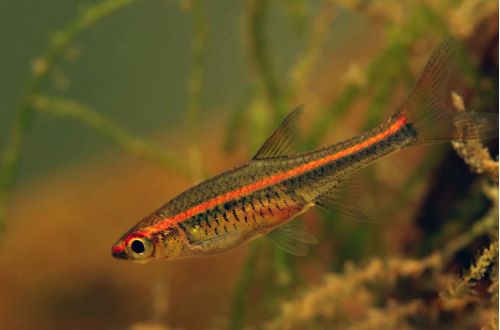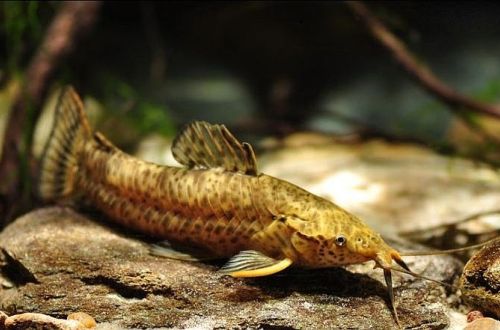
tiger fish
The African tiger fish, scientific name Hydrocynus vittatus, belongs to the Alestiidae family. One glance at this fish is enough to understand that this is a true predator, and quite aggressive at that. With its impressive size and corresponding appetite, the fish can be recommended not so much to experienced as to wealthy aquarists (financially), it is very difficult to feed such a pet.

Habitat
Tiger fish is often used with the word “African” because it lives in almost all major rivers and lakes in Africa. They are ferocious and voracious predators, preying on anyone who is smaller than them in size, but can diversify their diet and plant foods. The fish first received a scientific description in the 19th century, although it has been known to local inhabitants for many hundreds of years, being an important source of food for the inhabitants of coastal villages.
Description
Wild representatives of the species are able to grow more than 1 meter in length, but in the confined space of the aquarium they rarely exceed 75 cm. They have an elongated body shape, tapering towards the head, a forked caudal fin. The head is large with a large mouth, in which sharp teeth are clearly visible, they are conical in shape and pointed at the top, designed to capture and crush prey.
The body color is silvery with large scales, shimmering with a golden hue. The fins are yellow or red pigmented.
Food
The most suitable type of food is small live fish. An adult Tigerfish requires a 15 cm prey fish. This is enough for one time if half the size. Feeding is carried out several times a day.
Fish can also eat pieces of meat, including frozen, but this is just an addition to the main food, dry industrial food in the form of granules is also suitable for fry, but until they grow up.
Maintenance and care
Large and rather dirty fish produce a lot of waste, which should be promptly disposed of. Provide a powerful filtration system, an external canister filter is recommended. It has high performance and is outside the aquarium, so the fish will not be able to damage the equipment. Mandatory replacement of water by 30 – 50% every two weeks, which can be combined with cleaning the soil with a siphon.
In the design, be guided by two requirements – the presence of shelters / ambushes and a large space for swimming. The problem is solved by placing tree roots, artificial grottoes, caves at the bottom of the aquarium. Plants are large with strong roots, located in groups along the side walls.
Fish are not aggressive towards each other. At a young age they stay in a pack. It is difficult to find neighbors in the aquarium, there are few species that can live together with Tiger fish, so it is better to refuse this idea. In solitude or in a small group, she feels quite comfortable.
Breeding / breeding
There have been no cases of successful breeding in home aquariums, since a large number of conditions are required to reproduce – an imitation of the rainy season, the possibility of migrating to shallow rivers or backwaters where eggs are deposited, etc. Tiger fish are grown in special nurseries and only then sent to retail chains .
Diseases
The fish is hardy and unpretentious, if the aquarium is in good condition, then there are no health problems. The main reasons for a decrease in immunity are the lack of free space (a small aquarium) and poor-quality food. Since the fish feed on live food, there is a risk of infection through sick prey fish. Read more about symptoms and treatments in the Aquarium Fish Diseases section.





